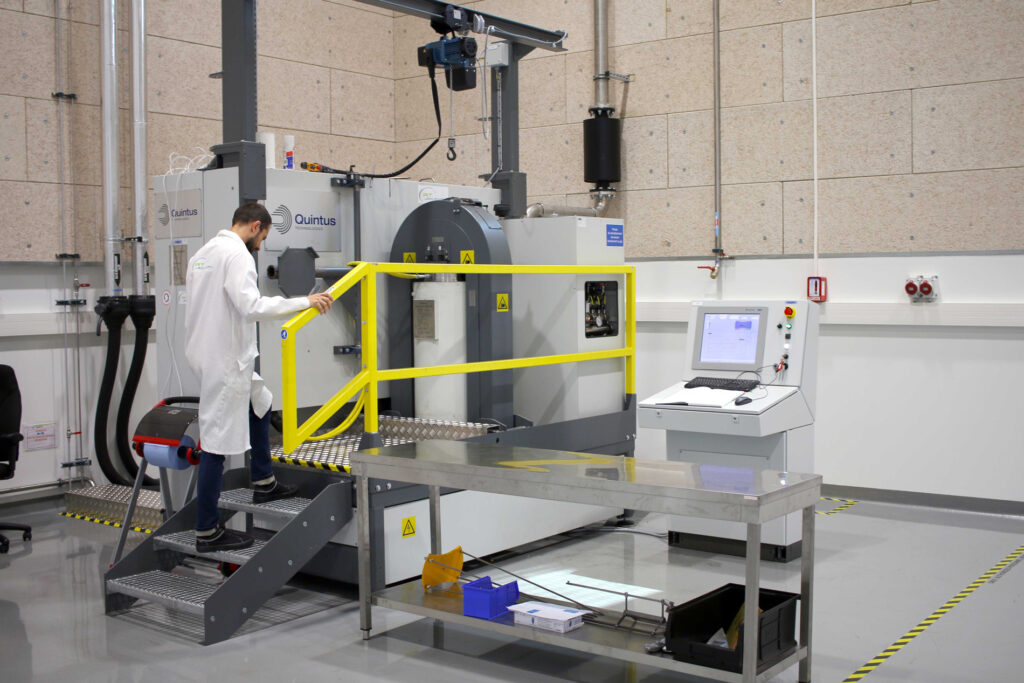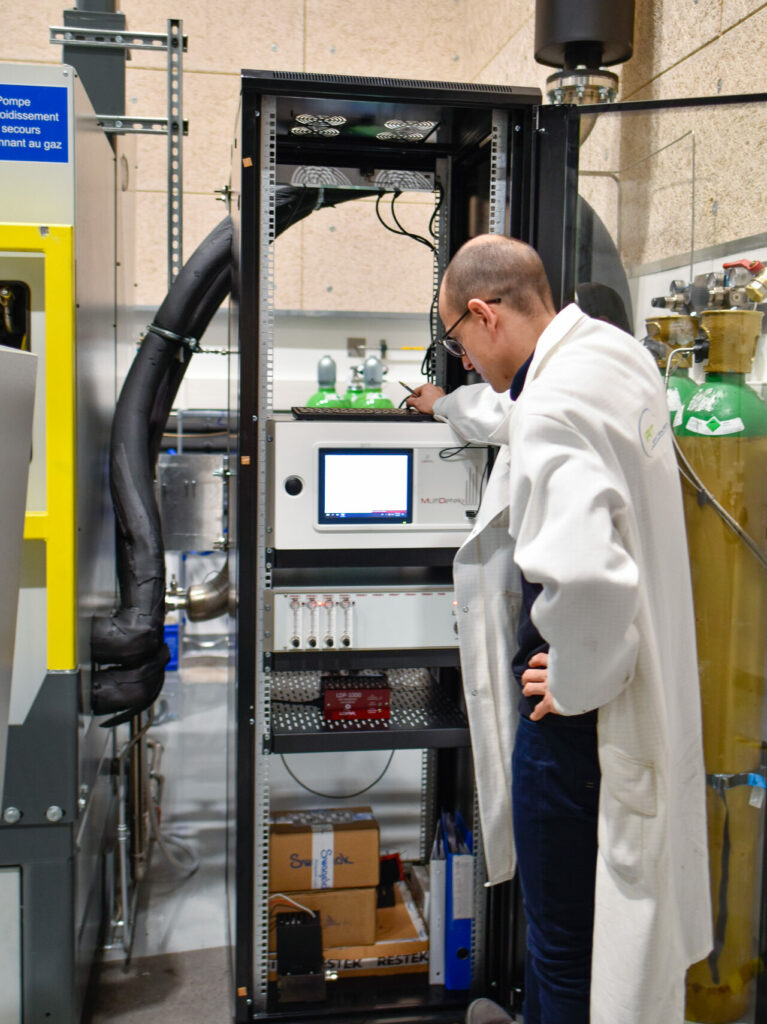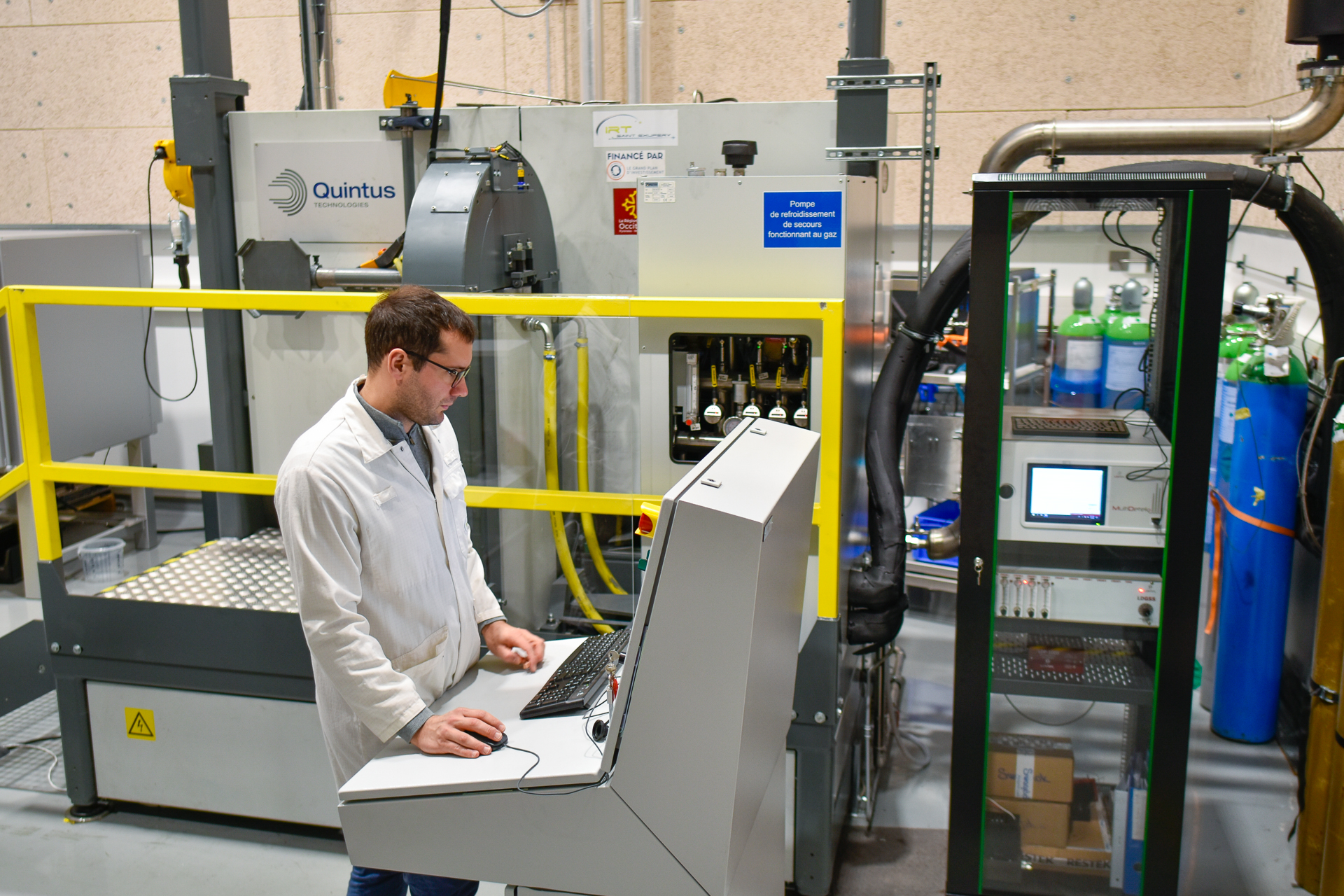In keeping with our research and innovation efforts within the field metal additive manufacturing technologies, the IRT Saint Exupéry has upgraded its platforms and services by equipping its Hot Isostatic Press (HIP) with a gas analyzer.
This modification is part of the HIPPOME project which includes Safran, Air Liquide, the CIRIMAT Laboratory as an academic member, and Quintus as a collaborative partner. This gas analyzer can measure concentrations of impurities such as oxygen, hydrogen, nitrogen, water vapor and methane, up to levels of hundreds of ppb (parts per billion). These precise measurements of the treatment atmosphere will help to improve the surface condition of parts after an HIP cycle.
HIPPOME project
The main objective of the HIPPOME project is to study oxidation phenomena during an HIP-type heat treatment of a nickel-based super alloy produced by Laser Powder Bed Fusion (LPBF) or by the Metal Injection Moulding (MIM) process. In addition, this project includes development of new heat treatment ranges by integrating HIP as a tool to design the microstructure.
Since May 2021, IRT Saint Exupéry is facing up the technical challenges of HIPPOME project regarding the surface condition of the parts produced by metal additive manufacturing after the HIP cycle. Jonathan Hugues, Nicolas Mrozowski, Aurélien Prillieux Thibaut Mancier, Mauro Ravaioli and Simon Pérusin are carrying out specific research aiming to improve post-treatment steps by ensuring a cleaner surface of the part after heat treatment and material reliability.

The HIP process applies high pressures and temperatures to the material in order to remove defects from the manufacturing process ensuring a very high density. This step makes it possible to improve the parts properties in operating conditions, particularly during mechanical tests such as fatigue tests.
Although a protective gas (argon) is used during the HIP treatment, the treated part surfaces exhibit black coloration due to reactions between impurities contained in the HIP atmosphere and the part. These degraded surface are detrimental to other downstream assembly processes, particularly for certain non-machined parts, known as “near net shape” parts.
To prevent these contamination phenomena, it is necessary to understand which impurities in the HIP are reacting with the parts. Is it oxygen, water vapor, nitrogen, or carbon? This is where the gas analyzer becomes a real game-changer
The IRT is accompanied in this project by Quintus (HIP manufacturer) which creates a system to allow gases sampling as close as possible to the treated parts, and by Ldtek (Process Sensing Technologies (PST) group’s brand) gas analyzer manufacturer, and Air Liquide who are in charge of the installation and calibration of the system.

A unique equipment in Europe
The sampling system developed by Quintus will allow gas to be collected at high temperature and high pressure (up to 1,400 °C and 2,000 bar) from the parts processing area. Then the gas is sent to the analyzer in order to determine its composition and thus precisely identify the reactions between gas impurities and the parts being treated. This ability to collect gas as close as possible to the parts and to be able to analyze it is currently unique in Europe for this type of equipment.
The results are finally used to feed thermodynamic calculations and thus predict the potential formation of phases such as oxides on the surface of treated parts. These calculations help to understand the evolution of the parts surfaces during the treatment and contribute to the development of the best technological solution to improve their condition at the end of the treatment.
Beyond these studies, the analyzer helps industrial businesses to improve their processes. Quantifying contaminants for which the effects are determined to be acceptable below a certain threshold will validate processes and ensure quality. The HIP thus equipped now enables the IRT Saint Exupéry to develop specifications and processes to obtain parts of optimal quality by minimizing the number of heat treatment stages.
IRT’s technology platforms make it possible to carry out tailor-made research work, respecting the specific needs of each client by adapting services to the customer’s expectations, his technological maturity level, and his size by providing Start-ups, VSBs and SMEs a unique access to development resources.
Key informations
- Project members: Safran, Air Liquide, CIRIMAT laboratory, IRT Saint Exupéry and Quintus as a collaborative partner.
- This analyzer is available for service and research projects.
- This is state-of-the-art equipment that can detect levels of up to 100 ppb for the molecules O2, N2, H2, CH4 and H2O.
- Allows gas to be withdrawn from an environment subjected to up to 1,400°C and 2,000 bar of pressure.
- The gas analyzer offers short response times and allows continuous monitoring for oxygen and water vapor using non-chromatographic measurement systems. The equipment also provides a point every 200 seconds by chromatography for H2, N2 and CH4 species.

